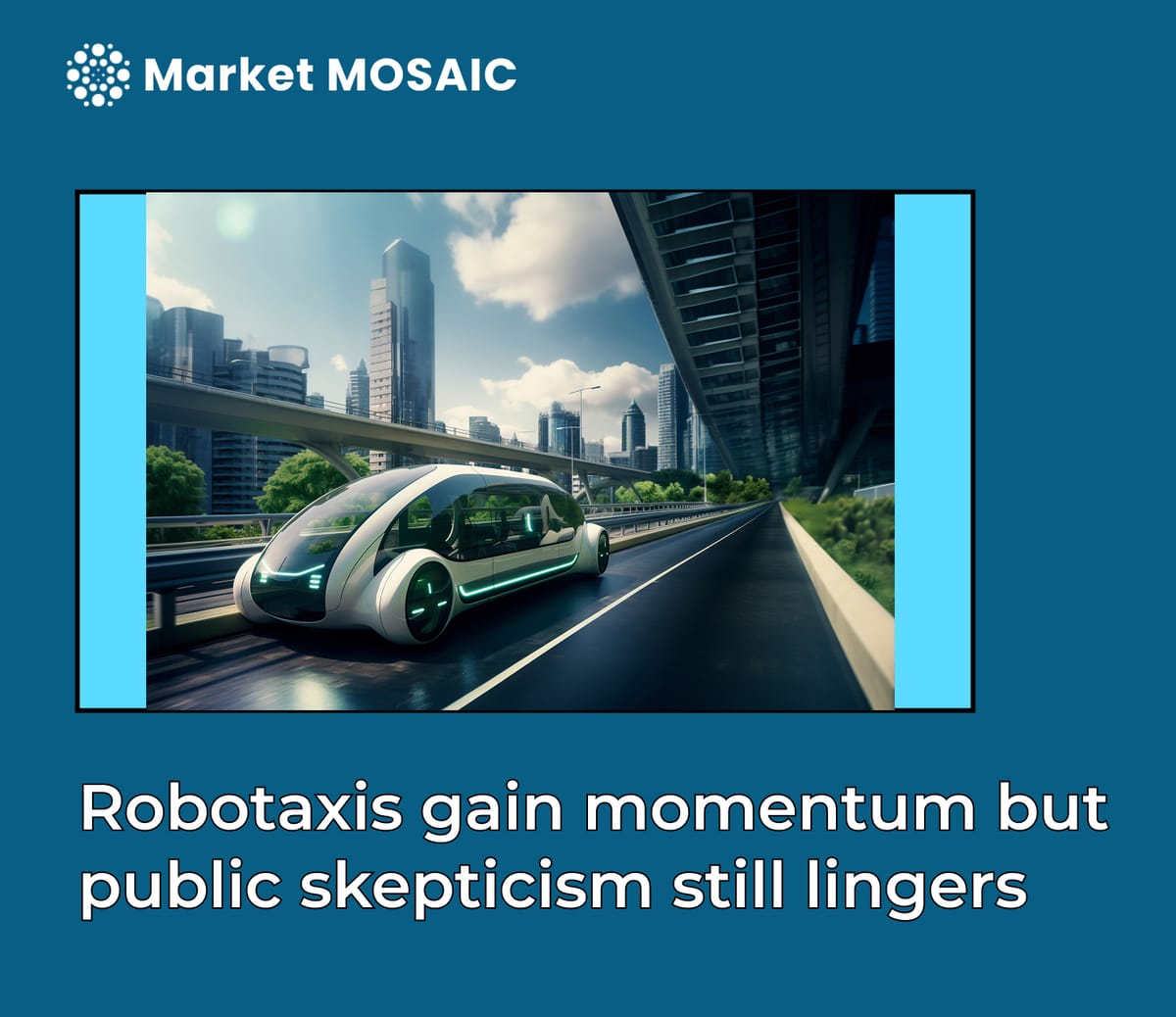Robotaxis gain momentum but public skepticism still lingers
Robotaxis are rolling out globally, but adoption depends on trust. In China, consumers are embracing autonomous rides. In the U.S., safety concerns and skepticism are slowing momentum. The gap reveals how local attitudes shape the future of mobility.

Robo-taxis are self-driving vehicles designed to operate without a human driver, often for ride-hailing or public transportation services. Equipped with a blend of cameras and artificial intelligence (AI), these vehicles operate in real-world traffic conditions, make real-time driving decisions, and transport passengers to their destinations autonomously.
Long confined to science fiction, robotaxis are now reshaping urban mobility. They promise cheaper fares, reduced traffic congestion, lower emissions, and significant cost savings for operators potentially transforming how cities move people and goods. But while the technology is racing ahead, consumer trust and regulatory acceptance haven’t quite caught up.
The momentum is real, but it’s uneven
Tesla recently rolled out its first small-scale robotaxi service in Austin, Texas, while Waymo, Google’s self-driving subsidiary, is expanding operations into Atlanta, adding to its footprint in Phoenix, San Francisco, and Los Angeles.
Across the Pacific, however, China is already operating at scale. Baidu’s Apollo Go, one of the country’s leading autonomous fleets, now manages around 1,000 robotaxis across key metropolitan areas including Beijing, Shanghai, and Guangzhou. Unlike U.S. cities where skepticism lingers, Chinese consumers are showing greater comfort and even preference for autonomous rides, particularly as competitive fare structures undercut traditional taxis.
According to industry reports, China’s robotaxi sector could be worth $24 billion by 2030, with state support and a tech-hungry population accelerating adoption.
Safety, perception, and the 'trust gap'
Despite technological progress, Western markets are facing a slower road to adoption. General Motors’ Cruise project, once hailed as a key player in the U.S. robotaxi race, came to an abrupt halt after a 2023 accident in San Francisco raised new questions about safety protocols and liability. The incident not only triggered public backlash but also highlighted the challenges of scaling autonomous fleets in dense, unpredictable cityscapes.
Today, most robotaxi services still require remote safety operators or onboard drivers during operation. Service windows are often restricted to certain hours and neighborhoods, limiting true scalability. The industry now faces a clear trust bottleneck: consumers recognize the progress in autonomous vehicle technology, yet remain uncertain about its reliability and real-world safety
What this means for founders and business leaders
The future of autonomous mobility won’t be defined solely by engineering, it will hinge on execution, trust-building, and smart partnerships. Chinese operators are moving faster not just because of superior tech, but because of strategic alignment with regulators, localized deployment, and a population more willing to test and adopt.
For Western companies, the key to unlocking growth lies in closing the trust gap through transparency, gradual rollouts, and rigorous public education. Investors and founders in the mobility space should be tracking not just advancements in AI, but shifts in consumer behavior and policy frameworks.
In an industry where perception can be just as powerful as performance, early missteps can cost millions and winning trust may be the most valuable asset of all.





